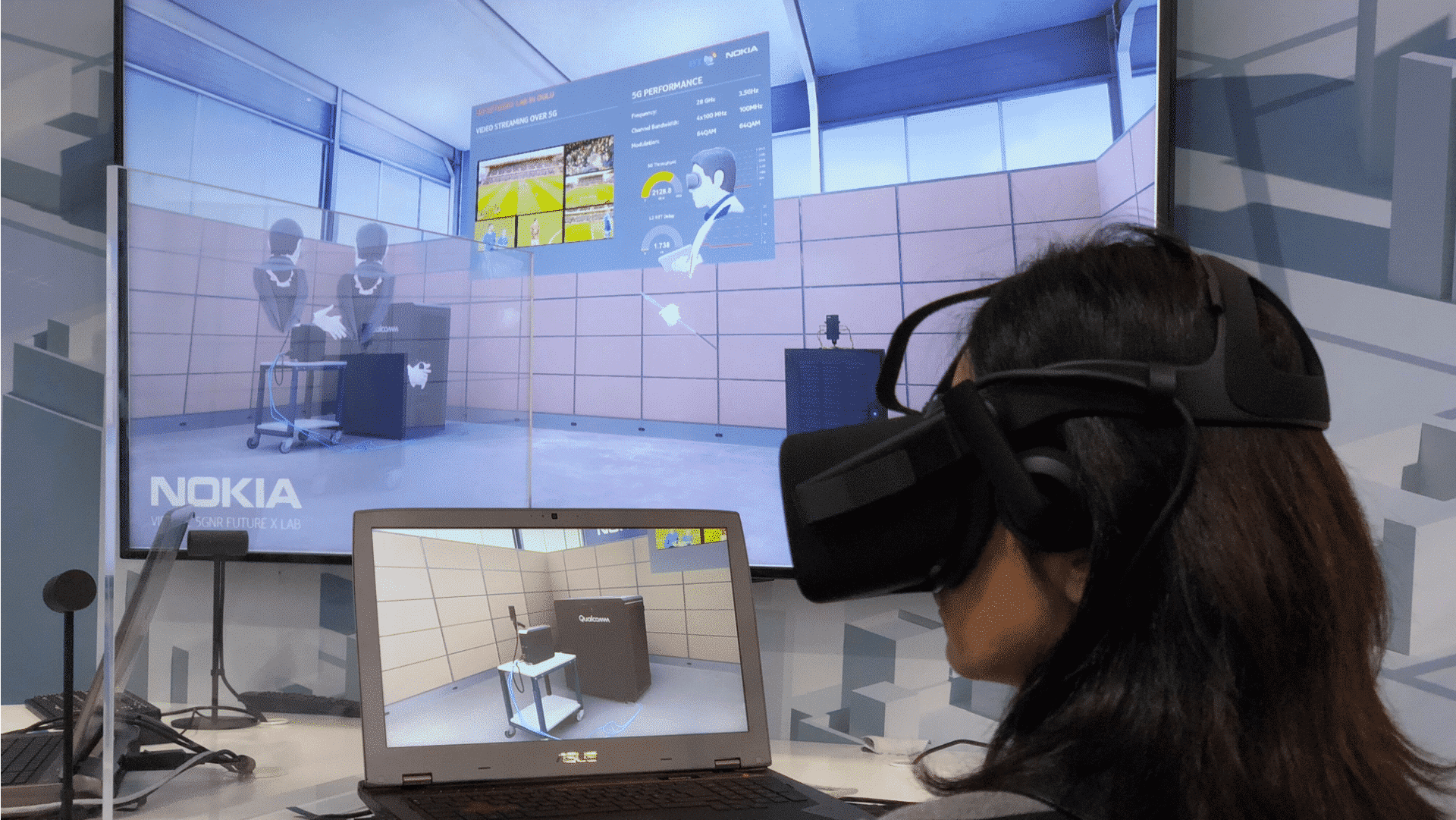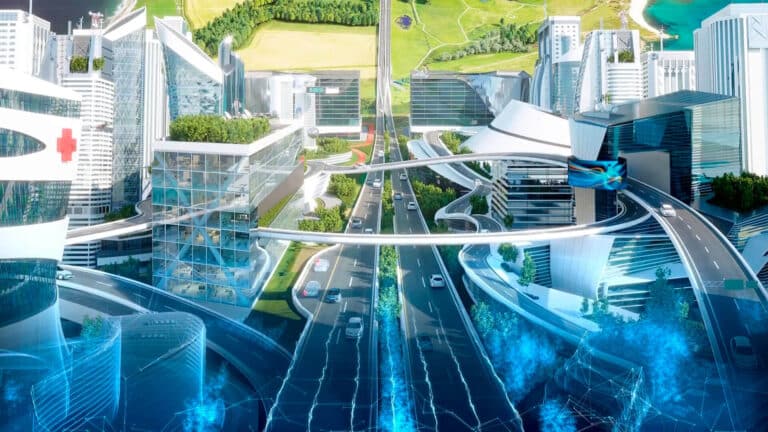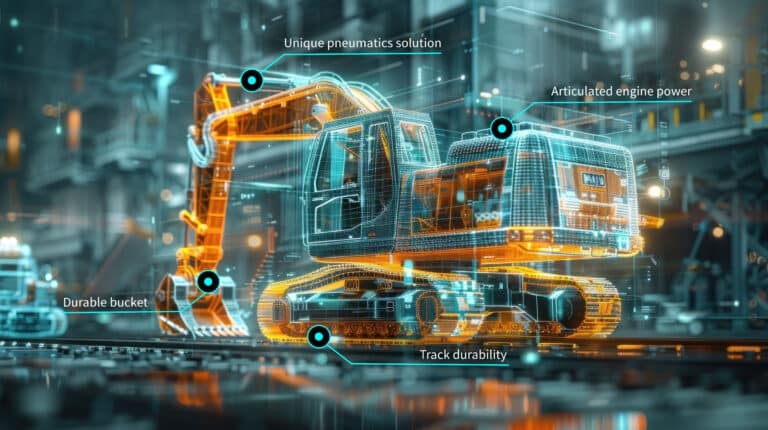Can you tell us a little bit about Stereoscape’s journey to date?
We started out doing stereoscopic 3D conversions of films. Later we progressed to working with glasses-free 3D technologies, including 3D holographic displays, gradually integrating interactivity into our portfolio.
Whilst stereo-3D ultimately didn’t take off in the consumer market, these early experiences gave us valuable insights and skills in the areas of immersive user experience, cross-disciplinary teamwork and effective integration of a broad range of technologies – all in the service of client business goals. And stereoscopy that tricks the brain into perceiving depth is of course an essential element of virtual and mixed reality.
How did you make the leap to interactivity?
Our work on interactive experiences started back in 2012. At that point, people were already regularly using touch screens on their phones and tablets to navigate content, and we noticed that one-way video or animation, even when 3D, or running inside a holographic display, felt too passive. People expected to interact with content. We began testing out gesture-based interactions, but our main focus was on touch screens of all sizes. Mobile AR was a natural evolution from touch-based interactivity.
In his inspiring new book, The Age of Smart Information, Mike Pell talks about the a-ha moments, the exhilarating moments of clarity when we ‘get it’, and how we can engineer such moments with the help of Smart Information. A cool technology like 3D creates lots of wow moments, but we were looking for something more: new ways to get people to those a-ha moments. The visual wow is important, but ‘wow, I get it’ is the experience we want our solutions to produce. This is also the idea behind smart product communication, a concept we introduced a couple of years ago and now the underlying theme of our work at Stereoscape.
Where is your focus now, as a company?
Interactivity is the driving force behind all our solutions. It puts people in control of their experience, driving engagement on a personal level and enabling customisation for different audiences. It also helps customers understand complex product information and enables learning and micro-learning in employee training. Content becomes more easily absorbed, leading to more effective knowledge retention.
In terms of solutions, even with gaze and gestures gaining ground as interaction techniques, touch will long remain an important interface to digital content, and mobile touch screens continue to be a rational choice for distributing AR. This said, we are very impressed by the smart glasses available on the market. In industrial settings, they enable hands-free, heads-up work, and therefore have the potential to significantly improve worker performance and productivity.
What about Extended Reality? How does it fit into the bigger picture?
In the enterprise segment, the ongoing XR transformation is about much more than shiny new technology: it’s about making people’s work easier and safer. Putting XR technologies in the service of people at work, helping them work smarter and learn faster – this is the big mission we are working on at Stereoscape.
Crucially, our approach is to devise solutions that build on companies’ existing systems and processes. For example, a Virtual Reality training module could be added to a current safety-training programme, and Augmented Reality elements incorporated to enhance an eLearning programme. A further example would be to turn existing CAD assets and paper manuals into interactive, step-by-step AR/MR instructions for production and maintenance workers.
Even though AR, VR and MR are still emerging technologies, big technology companies are investing heavily into their development. Some of the world’s leading companies – and many smaller ones – are already reaping business benefits from XR in the form of better worker performance, better quality, better learning outcomes and improved safety.
At Stereoscape, working with these exciting new technologies has been a natural continuation of our early involvement in immersive stereoscopic 3D.

You mentioned Smart Product Communication. What do you mean by it?
People are communicating a lot of product-related data and information to their audiences, and interactive 3D and XR can greatly enhance that communication. Smart Product Communication simply means making complex product information more understandable, by using smart information architecture, interactivity and immersive 3D and XR technologies.
We are also increasingly involved in the other aspect of Smart Product Communication: Making the growing volume of IoT data communicated by connected products more easily understandable to people. This is an area where we expect to see many exciting developments.
A few examples might help illustrate the concept. Where the traditional way to assist a field technician might be a thick paper manual, a new approach could be wearing AR smart glasses that provide the same information in interactive digital format in the exact right place on top of the physical world. Or instead of a PowerPoint presentation to communicate the design of a new project, a virtual walkthrough might provide a far more engaging simulation.
For several years now, we have mainly worked with B2B brands. Many of our clients are multinational technology companies, that typically have complex products, services or processes to market, sell, manufacture, install, service and provide training for. We assist these companies in communicating their product data and information more effectively and efficiently in all of these applications, and Smart Product Communication has emerged as the phrase that well captures the service we provide.
What is Stereoscape’s current position, and what are the next steps for you?
We are experiencing an exciting period of growth and interest in interactive and extended reality applications in the corporate sector. Over the past few years, our core team has worked across various pioneering projects, delivering business benefits based on interactive 3D and XR, in close collaboration with Finnish industry leaders such as Nokia, Fortum and Wärtsilä.
We see our role as an agile partner to large and medium sized companies. We offer productised solutions that provide an easy route to capitalise on the potential of the new technologies. We also have clients who want to run test cases across the spectrum of interactive and extended reality applications. Because of our broad range of expertise, we can also create custom solutions incorporating various interactive and digital technologies. Our cross-disciplinary expert team and lean networked structure allow for a flexible approach and makes us an ideal partner for companies either wishing to run pilots or start from a productised solution.
Do you have tips for companies looking to get started on XR or interactive projects?
We always start from understanding the client’s business targets. What are the business benefits we are aiming at? Each new project we work on begins by meeting with the client team to understand their end user needs and the client’s business case, and to agree on key performance indicators for the project. From there we can propose appropriate solutions and platforms.
Although XR technologies are still at an emerging stage, their applications are already producing substantial business benefits for a growing number of companies across various industries globally. Our recommendation is to start from a clearly defined, limited use case to gain experience and to understand the different feasibility, usability and viability aspects of XR solutions.

Read more:
5 + 1 reasons why smart product communication is so smart

